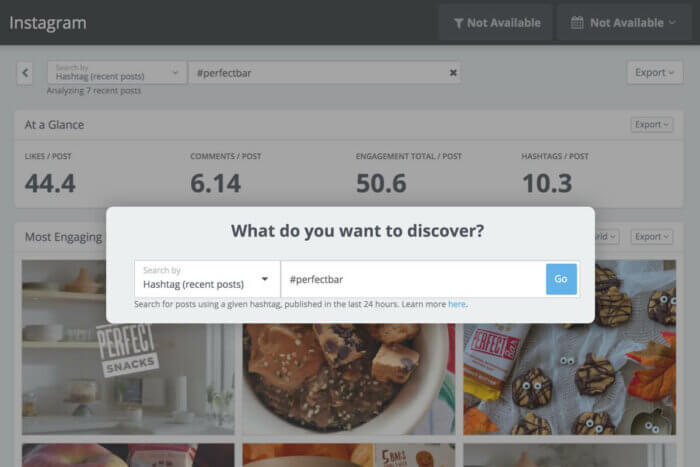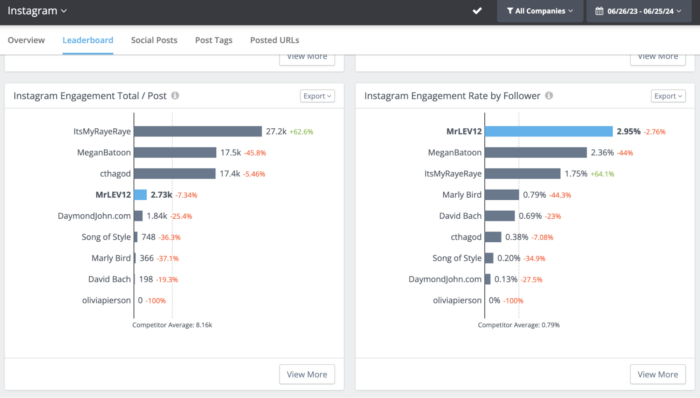If you’ve scrolled through social media lately, you’ve likely encountered influencer marketing in action — whether it’s your favorite celebrity promoting a new skincare line or a trusted YouTuber reviewing the latest tech gadget.
So, what exactly is influencer marketing? Put simply, it’s when brands collaborate with people who have a significant online following and, as a result, the power to influence their audience’s purchasing decisions.
Influencer marketing is crucial for brands looking to connect with their customers in an authentic and relatable way. With consumers craving genuine content and real-life testimonials, traditional advertising methods are becoming less effective. Influencers bridge that gap, providing a trusted voice that brands can leverage to reach their audience.
By partnering with the right influencers, brands can enhance their visibility, build credibility, and drive conversions in a way that today’s consumers prefer. Ready to tap into the power of influencer marketing? Let’s dive into building a successful strategy.
What Is Influencer Marketing?
Influencer marketing has transformed from a niche tactic into a powerful strategy. It all started with celebrities endorsing products, but with the rise of social media, everyday people with engaged followings have become influential voices.
Customers have embraced this shift. According to a recent study, 81% of consumers stated that “social media posts from influencers, friends or family members drove interest in an item or service within the past year.” Even more, 69% reported trusting information that came from influencers, friends, and family over brands.
Influencer Marketing vs. Traditional Marketing
Traditional marketing often relies on broad-reaching methods like TV ads, billboards, and print media, with the messaging coming directly from the brand itself. These approaches aim to reach large audiences but can be costly and less targeted.
On the other hand, influencer marketing taps into the established trust and engagement between influencers and their followers.
These influencers often spend years building, getting to know, and engaging with their community of followers. In turn, their audience is much more likely to trust what they say about particular brands. This makes influencer marketing a highly cost-effective and effective strategy, with brands able to deliver messages directly to interested audiences through personal and authentic recommendations.
Take a look at Stanley, the iconic food and beverage gear brand, for instance. Influencer marketing is a huge component of Stanley’s marketing strategy, with the brand regularly seeing benefits such as greater views, engagement, and even sales when they partner with an influencer.
This TikTok by Stanley, which spotlighted its collab with country artist Lainey Wilson, is a perfect example. By strategically working with someone who had a bigger following (2.4M followers on TikTok versus Stanley’s 1.2M, as of writing), the brand was able to expand its reach significantly, drawing Lainey’s fanbase over to its content.

More importantly, though, Stanley achieved an incredible amount of engagement with this campaign. With a 111% engagement rate by follower, this post was a whopping 13x more engaging than the average Stanley post from the past year, with hundreds of comments expressing their excitement and impatience for the new product. Talk about a successful collab!
Types of Influencers
With the onset of online communities and social media, countless influencers have emerged, all with various niches, approaches, and audiences. The most common way to categorize these different influencers is by the size of their following. We go into more detail in our influencer tracking guide, but here’s a quick rundown of the types:
Mega-Influencers
Mega-influencers, with over a million followers, include celebrities (like Lainey Wilson in our example above) and social media stars. With such a huge audience, they can massively boost your brand’s visibility. However, their star power comes at a high price and they may not always deliver high engagement due to their vast and varied audience.
Macro-Influencers
Macro-influencers have around 100K to a million followers. They strike a good balance between having a large, engaged audience while being more accessible compared to mega-influencers.
Micro-Influencers
Micro-influencers, with 10K to 100K followers, focus on niche markets and have a loyal, engaged audience. They offer good ROI and are more affordable, though they may lack the reach of larger influencers.
Nano-Influencers
Nano-influencers have fewer than 10K followers and are often deeply connected with their local or niche community. They’re highly authentic and affordable but have limited reach.
Dive into Influencer Analytics with Rival IQ. 
How Different Businesses Can Leverage Influencer Marketing
Influencer marketing isn’t a one-size-fits-all approach. Depending on the industry you’re in and your specific goals, there are different approaches you can take.
For instance, in B2B markets, influencer marketing strategies tend to focus on thought leaders and industry experts who can lend credibility and authority to your brand. These often involve collaborating on content like whitepapers, webinars, or industry events.
Meanwhile, B2C brands can benefit from the broader reach and creative content offered by lifestyle, beauty, and entertainment influencers on platforms like Instagram, TikTok, and YouTube. In this space, it’s all about creating content that resonates with everyday consumer experiences.
Here are some examples of how you can approach an influencer marketing campaign:
- Product Gifting. Offer free products in exchange for a review or feature. This approach encourages authentic content and word-of-mouth promotion.
- Affiliate Programs. This involves working with influencers on a commission basis, in which the influencer gets a percentage of sales or rewards for the sales they generate (often tracked through a unique link or discount code).
- Sponsored Posts. Pay influencers to create content that highlights your product or service. These posts are usually tagged as sponsored or paid partnerships, ensuring transparency with the audience while leveraging the influencer’s reach and engagement.
- Brand Ambassadors. Consider recruiting influencers as brand ambassadors to promote your products over an extended period. This creates a consistent brand message and deepens consumer trust.
- Collaborative Content. Co-create content such as videos, blogs, or social media takeovers. This collaboration can result in high-quality content that resonates with the influencer’s audience.
- Giveaways and Contests. Run joint giveaways or contests to drive engagement and increase brand visibility.
- Strategic Partnerships. These partnerships can go beyond social media posts to include event appearances, product development input, and other collaborative efforts that strengthen brand credibility.
Each type of influencer campaign offers unique opportunities to achieve your goals. And by thoughtfully selecting and combining these approaches, you can craft a powerful influencer strategy. Let’s dive into how to craft a winning influencer strategy to make the most of these opportunities.
Crafting an Effective Influencer Marketing Strategy
Influencer marketing can be a game-changer for your brand, but success depends on finding the right influencers to work with and following a well-thought-out plan from start to finish. Here’s how to approach your influencer marketing efforts:
1. Identify Goals and KPIs
Before you start working with influencers, take a moment to clearly define what you want to achieve. Are you aiming to increase brand awareness, drive sales, or build credibility in a specific niche? Your goals will impact the type of influencers you seek, the strategies you use, and the metrics you prioritize.
Your goals should be specific, measurable, achievable, relevant, and time-bound (SMART). Meanwhile, determining your key performance indicators (KPIs), such as reach, engagement rates, and conversions, will help you track and measure your success.
2. Analyze Your Audience
Understanding your audience is essential if you want to work with influencers who will resonate with them. Conduct a thorough social media audience analysis by diving deep into the demographics, psychographics, and behaviors of your target audience. What are their interests, values, and preferences?
Knowing these details ensures that the influencers you choose align with what your audience cares about. For instance, if you’re selling eco-friendly products to environmentally-conscious consumers, collaborating with influencers who advocate for sustainability can enhance credibility and relevance.
3. Determine Your Budget
Figuring out your budget is a crucial step in influencer marketing. Decide how much you’re willing to spend on your campaign, keeping in mind that costs can vary widely depending on the influencer’s reach and engagement.
Be sure to consider other expenses like content creation, tools for tracking performance, and potential ad spend to boost the campaign. By having a clear budget, you can narrow down your influencer choices and ensure that you don’t overspend.
4. Choose Your Campaign Type
Choosing the right campaign type is all about aligning with your goals. Are you looking to increase brand awareness? Try a product giveaway or a sponsored post. Want to boost sales? Consider affiliate marketing. For generating buzz, a takeover or a giveaway might be an effective approach.
Ultimately, your choice will depend on your target audience and the influencer’s style. Mix and match different types over time to see what works best for your brand.
5. Research with Influencer Analytics Tools
Once you’ve got an idea of why you’re doing this and what you’re looking for, it’s time to research influencers. Setting clear criteria — such as follower count, audience demographics, engagement metrics, value alignment, and content quality — will guide your selection process.
High engagement rates, in particular, indicate active and loyal followers, who are more likely to respond positively to your brand. While most platforms’ native analytics won’t allow you to see other accounts’ engagement rates, there are plenty of social analytics platforms that do.
For instance, Rival IQ makes it easy to not only discover new influencers but also assess their performance. With our social search tools, you can search topics, keywords, and hashtags and uncover notable influencers associated with relevant queries.

Meanwhile, our social analytics dashboard quickly reports essential performance data for any accounts of your choosing. You can even compare different influencers, the visual leaderboards allowing you to easily determine which ones you want to work with. Check it out below.

6. Reach Out To Influencers
Building relationships with influencers requires a thoughtful approach. Your relationship with influencers shouldn’t just be a transactional exchange but a partnership that involves active dialogue and collaboration.
Start by personalizing your outreach message. Influencers appreciate when you demonstrate knowledge of their work and audience. Additionally, clearly outline the benefits of collaborating, such as exclusive products, affiliate opportunities, or co-created content ideas. Respect their time and be transparent about expectations, including compensation if applicable.
7. Co-Collaborate on Content Creation and Launch
Once you’ve partnered with the right influencers, it’s time to create the content and launch your campaign. Outline the types of content (e.g., posts, videos, stories), social platforms, and messaging that will be included in the campaign. Establish a timeline with key milestones — such as content creation deadlines, review periods, and publishing dates — to ensure a smooth workflow and timely delivery.
Remember, effective collaboration is key to creating content that resonates with both the influencer’s followers and your customer base. Work closely with influencers to co-create content that aligns with your brand identity while remaining true to the influencer’s unique style and voice.
8. Track Your Performance
After launching your influencer marketing campaign, the real work begins: measuring its impact. By analyzing the results of your campaigns, you gain insights into what works, what needs improvement, and how influencers contribute to your overall marketing strategy.
Here are some key metrics you’d want to keep an eye on:
- Engagement. This metric measures how audiences interact with your content through likes, comments, shares, and saves. High engagement indicates that the content resonated with the influencer’s audience.
- Reach. This refers to how many people have seen the content posted and helps you gauge the campaign’s potential exposure and brand visibility.
- Conversions. Tracking conversions such as website visits, sign-ups, or purchases directly attributable to the influencer’s promotion is an essential way to measure how effective the campaign is at driving desired actions.
- ROI (Return on Investment). Calculating ROI, which compares the campaign’s gains against its costs, is the most straightforward way to determine the profitability of your influencer marketing efforts. For more info, check out our post on how to measure social media ROI.
Again, a comprehensive social analytics tool like Rival IQ can help you effectively track these metrics for multiple influencers across different channels. With tools for tracking accounts, hashtags, URLs, and keywords, you’re able to keep an eye on who’s posting, how often, and the results their content is achieving.

9. Optimize Your Strategy
Like any effort, influencer marketing works best when you continuously improve your strategies over time. Gathering feedback from both influencers and your audience can help you refine your approach and maximize their impact.
Start off by listening to your influencers. They’re your frontline ambassadors, the ones interacting directly with their followers. Your influencer partners can offer first-hand insights into what resonates best with their audience and what doesn’t. Maintain regular communication and feedback loops with them so that you can adjust and improve content strategies quickly.
It’s also important to analyze the data on campaign performances. Metrics such as engagement rates, reach, and conversions provide concrete evidence of what’s working and what needs fixing.
Once armed with feedback and data, don’t hesitate to optimize. Whether it’s tweaking content formats, adjusting posting schedules, or refining audience targeting, every improvement brings you closer to the results you want.
Wrapping It Up
When it comes to influencer marketing, staying ahead also means staying informed. Trends will inevitably shift and new platforms will emerge, so it’s crucial to stay nimble and be able to adapt your strategy accordingly. Still, this guide outlines the foundational elements of a solid influencer marketing strategy. By mastering the fundamentals — setting clear goals, finding the right influencers, and measuring impact — you’ll be well on your way to campaign success.
